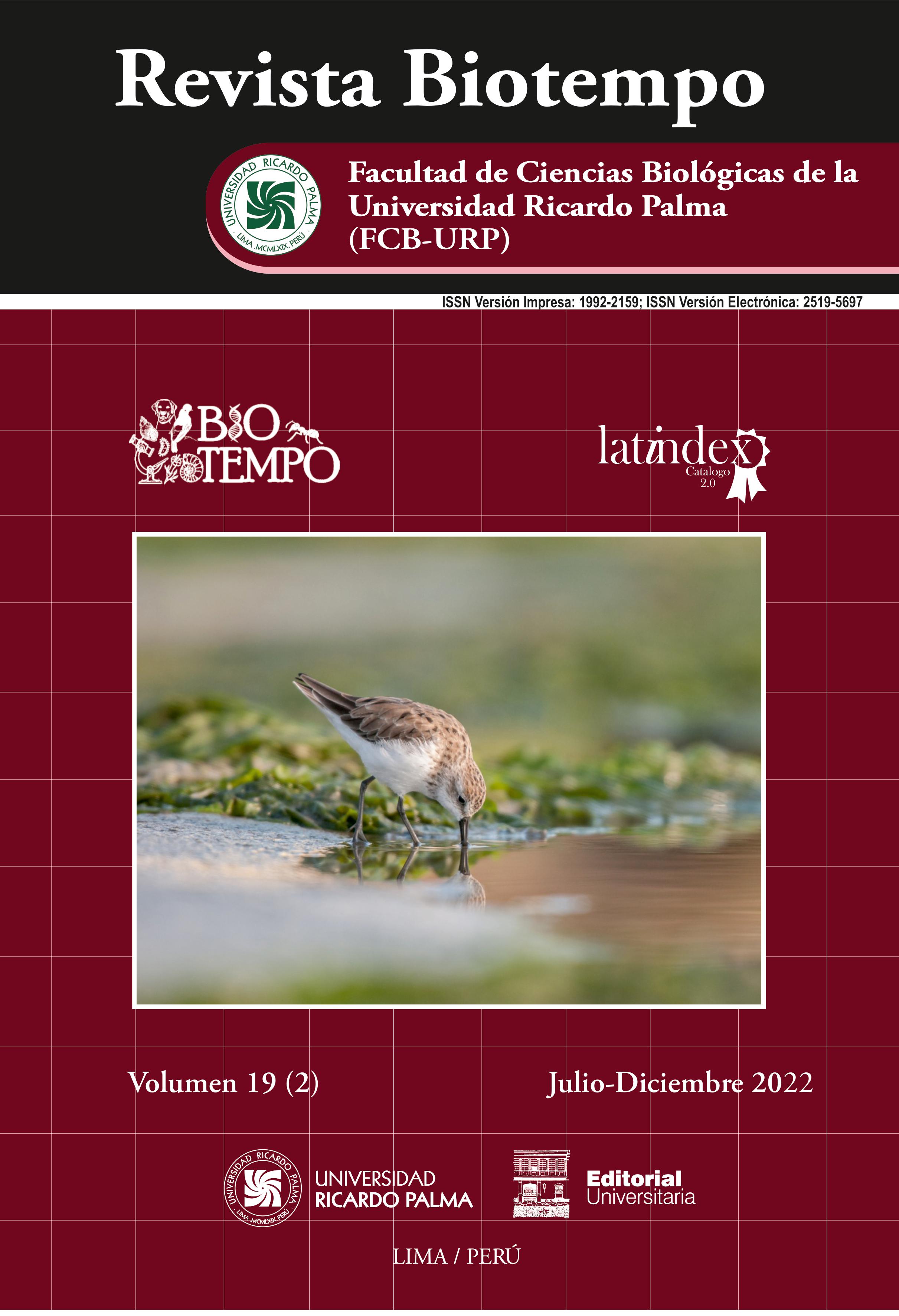DISTRIBUTION OF SPATIAL AND TEMPORARY OF THE RABIES DOG IN THE HAVANA DURING THE PERIOD 2009-2018
DOI:
https://doi.org/10.31381/biotempo.v19i2.5023Keywords:
epidemiology , hydrophobia , Lyssavirus , dogs , zoonosisAbstract
Canine rabies is a current health problem, very important for public health, livestock production, and the economy. The objective of this research was to evaluate the Spatio-temporal distribution of canine rabies in the period 2009-2018 in Havana, Cuba. A descriptive, retrospective, passive, cross-sectional, observational study was conducted. For the statistical analysis, the Epidat software, version 3.1, based on a Microsoft Excel matrix, was used. The epidemiological indicators were determined: prevalence of cases, monthly time series, and cumulative trend of outbreaks. While, for the spatial analysis, the geographic coordinates were calculated from the centroid of each municipality. For visualization, the QGIS version 3.0.1 program and the GEOCUBA cartographic bases were used. The comparison of proportions was made for the positive cases between the peripheral and central areas, which were graphed in the statistical package BlueSky Statistics version 6.0.7. As a result, it was obtained that the highest population density of canines/km2 is found in the group of municipalities 10 of October - Centro Habana-Habana Vieja; followed in decreasing order by the West group (La Lisa-Playa-Marianao-Regla) and the lowest population density in the Cotorro-Guanabacoa-Habana del Este group. Highly significant proportions of foci were revealed in the peripheral geographical areas, compared to the central ones. It was shown in the monthly time series of rabies foci, a parallel behavior in time from 2009 to 2013, with an increase between February 2014 and October 2015, and a peak in the month of August, in addition, there was a decrease in the month of November 2018. It is concluded that there is a trend towards significant variations in the spatial and temporal distribution of canine rabies in Havana in the period 2009-2018.










